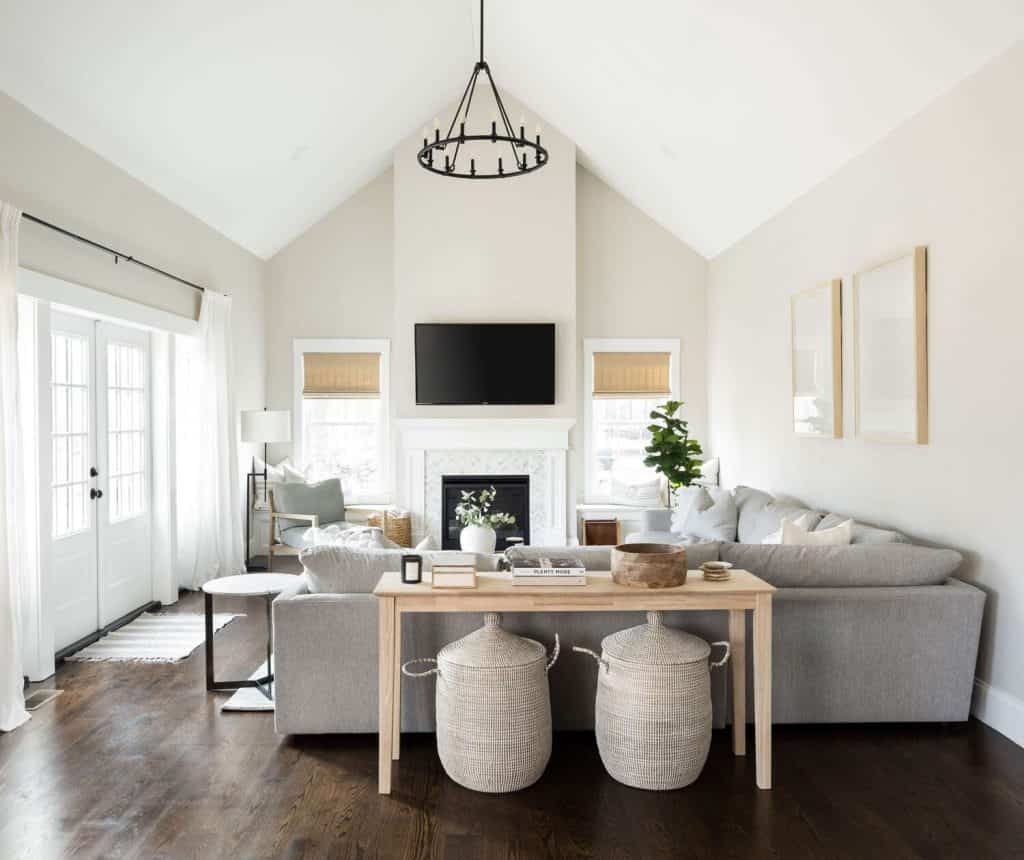It’s pretty well known amongst decorators and interior designers that colour plays a significant role in the perceived mood of a room and can have profound effects. Warm colors tend to evoke feelings of arousal and excitement, whereas cool colors are associated with calmness and relaxation.
But did you know colors can also change your perception of how close surfaces are, in other words, you can make a room feel bigger or smaller purely through paint color. Home improvement and staging have exploded in popularity, and with that, so has the obsession with using color to “trick” the eye. There’s a classic DIY hack that you may have heard of, that is, to paint the back wall of a long, narrow hallway a darker color than the sides. Why? To kill that endless corridor vibe and make the space feel more balanced. Clever, isn’t it?
Architects agree that the brightness of a room’s surfaces—both the walls that define the space and those around them—affects how big or small the space feels. Put simply, brighter walls make a space seem larger, and this effect is even stronger when there’s a big contrast between the brightness of the main walls and the surrounding surfaces. The bigger the difference, the more noticeable the impact.

Brighter ceilings feel more open
Being a Gold Coast Painter, the bulk of my work is residential interior painting and the majority of the painted work I do is using white paint, it’s 2025. But oftentimes my clients opt for the same coloured white on their ceilings as their walls. But there’s heaps of different whites on the market. Take a look at Dulux white color chart:
Amongst the cool whites there may seem to be very little difference, but I always suggest to my clients to use the brightest possible ceiling flat to really open up that room. But to an extent of course, vivid white ceilings work excellent for modern designs, however for more traditional style homes I always just aim for shade or too white to avoid that clinical environment type feel.

Why is this the case anyway?
It’s thought, darker colors on certain walls can “pull” them closer visually, reducing perceived distance and using contrasts—like a much brighter ceiling compared to the walls, your eyes and then drawn upwards which expands the vertical dimension.
A great study on the matter
A notable study, The Role of Colours in Interior Design of Liveable Spaces looks mainly at color and effects on mood, but also found “employing lighter colors on walls and ceilings can create an illusion of spaciousness, making a small room appear larger”
So next time you’re choosing paint, think beyond aesthetics: consider how you want the room to feel in terms of size, mood, and atmosphere. If you’re unsure, don’t hesitate to consult a professional—sometimes, that extra bit of expertise can turn a claustrophobic room into an airy sanctuary.

